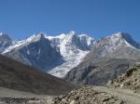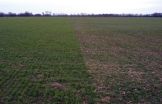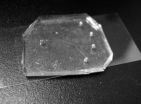(Press-News.org) (Santa Barbara, Calif.) –– A new scientific study shows that debris coverage –– pebbles, rocks, and debris from surrounding mountains –– may be a missing link in the understanding of the decline of glaciers. Debris is distinct from soot and dust, according to the scientists.
Melting of glaciers in the Himalayan Mountains affects water supplies for hundreds of millions of people living in South and Central Asia. Experts have stated that global warming is a key element in the melting of glaciers worldwide.
Bodo Bookhagen, assistant professor in the Department of Geography at UC Santa Barbara, co-authored a paper on this topic in Nature Geoscience, published this week. The first author is Dirk Scherler, Bookhagen's graduate student from Germany, who performed part of this research while studying at UCSB.
"With the aid of new remote-sensing methods and satellite images, we identified debris coverage to be an important contributor to glacial advance and retreat behaviors," said Bookhagen. "This parameter has been almost completely neglected in previous Himalayan and other mountainous region studies, although its impact has been known for some time."
The finding is one more element in a worldwide political controversy involving global warming. "Controversy about the current state and future evolution of Himalayan glaciers has been stirred up by erroneous reports by the Intergovernmental Panel on Climate Change (IPCC)," according to the paper.
"There is no 'stereotypical' Himalayan glacier," said Bookhagen. "This is in clear contrast to the IPCC reports that lumps all Himalayan glaciers together."
Bookhagen noted that glaciers in the Karakoram region of Northwestern Himalaya are mostly stagnating. However, glaciers in the Western, Central, and Eastern Himalaya are retreating, with the highest retreat rates –– approximately 8 meters per year –– in the Western Himalayan Mountains. The authors found that half of the studied glaciers in the Karakoram region are stable or advancing, whereas about two-thirds are in retreat elsewhere throughout High Asia. This is in contrast to the prevailing notion that all glaciers in the tropics are retreating.
Bookhagen explained the difference between debris and coverage by soot and dust on glaciers: "The debris cover has the opposite effect of soot and dust on glaciers. Debris coverage thickness above 2 centimeters, or about a half an inch, 'shields' the glacier and prevents melting. This is the case for many Himalayan glaciers that are surrounded by towering mountains that almost continuously shed pebbles, debris, and rocks onto the glacier."
Thus, glaciers in the steep Himalaya are not only affected by temperature and precipitation, but also by debris coverage, and have no uniform and less predictable response, explained the authors. The debris coverage may be one of the missing links to creating a more coherent picture of glacial behavior throughout all mountains. The scientists contrast this Himalayan glacial study with glaciers from the gently dipping, low-relief Tibetan Plateau that have no debris coverage. Those glaciers behave in a different way, and their frontal changes can be explained by temperature and precipitation changes.
Bookhagen described results of another of his recent studies on this topic. He said that one of the key findings was that the Western Himalaya, including the Indus catchment and regions in Northern Pakistan and Northwestern India, depend heavily on seasonal snow and glacial melt waters, while Central Himalayan regions –– Western India and Nepal –– mostly depend on monsoonal rainfall.
The smaller seasonal water storage space in the Central Himalaya, which has only steep glaciers and no large snow fields, makes this region much more vulnerable to shifts in monsoonal strength and to glacial melting, explained Bookhagen. River discharge in these regions is crucial to sustain agriculture, hydropower, and drinking water. If the Indian monsoon season is weaker because of global atmospheric changes such as El Niño, then Central Nepal must primarily rely on water coming from the seasonal melting of glaciers and the small amount of snowmelt that is available.
"Retreating glaciers, and thus a reduction of seasonal water storage in this region, have a large impact on hundreds of millions of people living in the downstream section of these rivers," said Bookhagen. "The mitigation and adaptation strategies in the Himalaya Mountains thus need to take into account the spatial climatic and topographic variability. There is no regional solution, but only different local strategies to the future water shortage. The geographic setting of High Asia poses political difficulties as future water treaties need to be carefully evaluated."
INFORMATION:
Scientists find that debris on certain Himalayan glaciers may prevent melting
2011-01-26
ELSE PRESS RELEASES FROM THIS DATE:
Dating sheds new light on dawn of the dinosaurs
2011-01-26
Careful dating of new dinosaur fossils and volcanic ash around them by researchers from UC Davis and UC Berkeley casts doubt on the idea that dinosaurs appeared and opportunistically replaced other animals. Instead -- at least in one South American valley -- they seem to have existed side by side and gone through similar periods of extinction.
Geologists from Argentina and the United States announced earlier this month the discovery of a new dinosaur that roamed what is now South America 230 million years ago, at the beginning of the age of the dinosaurs. The newly discovered ...
Cell death pathway linked to mitochondrial fusion
2011-01-26
New research led by UC Davis scientists provides insight into why some body organs are more susceptible to cell death than others and could eventually lead to advances in treating or preventing heart attack or stroke.
In a paper published Jan. 21 in the journal Molecular Cell, the UC Davis team and their collaborators at the National Institutes of Health and Johns Hopkins University report that Bax, a factor known to promote cell death, is also involved in regulating the behavior of mitochondria, the structures that provide energy inside living cells.
Mitochondria constantly ...
Wheat resistance genes failing, new approach needed to stop flies
2011-01-26
WEST LAFAYETTE, Ind. - Many of the genes that allow wheat to ward off Hessian flies are no longer effective in the southeastern United States, and care should be taken to ensure that resistance genes that so far haven't been utilized in commercial wheat lines are used prudently, according to U.S. Department of Agriculture and Purdue University scientists.
An analysis of wheat lines carrying resistance genes from dozens of locations throughout the Southeast showed that some give little or no resistance to the Hessian fly, a major pest of wheat that can cause millions of ...
Conversion of brain tumor cells into blood vessels thwarts treatment efforts
2011-01-26
LA JOLLA, CA--Glioblastoma, the most common and lethal form of brain cancer and the disease that killed Massachusetts Senator Ted Kennedy, resists nearly all treatment efforts, even when attacked simultaneously on several fronts. One explanation can be found in the tumor cells' unexpected flexibility, discovered researchers at the Salk Institute for Biological Studies.
When faced with a life-threatening oxygen shortage, glioblastoma cells can shift gears and morph into blood vessels to ensure the continued supply of nutrients, reports a team led by Inder Verma, Ph.D., ...
Purdue team creates 'engineered organ' model for breast cancer research
2011-01-26
WEST LAFAYETTE, Ind. - Purdue University researchers have reproduced portions of the female breast in a tiny slide-sized model dubbed "breast on-a-chip" that will be used to test nanomedical approaches for the detection and treatment of breast cancer.
The model mimics the branching mammary duct system, where most breast cancers begin, and will serve as an "engineered organ" to study the use of nanoparticles to detect and target tumor cells within the ducts.
Sophie Lelièvre, associate professor of basic medical sciences in the School of Veterinary Medicine, and ...
Blue crab research may help Chesapeake Bay watermen improve soft shell harvest
2011-01-26
Baltimore, Md. (January 24, 2011) – A research effort designed to prevent the introduction of viruses to blue crabs in a research hatchery could end up helping Chesapeake Bay watermen improve their bottom line by reducing the number of soft shell crabs perishing before reaching the market. The findings, published in the journal Diseases of Aquatic Organisms, shows that the transmission of a crab-specific virus in diseased and dying crabs likely occurs after the pre-molt (or 'peeler') crabs are removed from the wild and placed in soft-shell production facilities.
Crab ...
Loyola physician helps develop national guidelines for osteoporosis
2011-01-26
MAYWOOD, Ill. -- The American Association of Clinical Endocrinologists (AACE) has released new medical guidelines for the diagnosis and treatment of postmenopausal osteoporosis. Loyola physician Pauline Camacho, MD, was part of a committee that developed the guidelines to manage this major public health issue.
These recommendations were developed to reduce the risk of osteoporosis-related fractures and improve the quality of life for patients. They explain new treatment options and suggest the use of the FRAX tool (a fracture risk assessment tool developed by the World ...
GRIN plasmonics
2011-01-26
They said it could be done and now they've done it. What's more, they did it with a GRIN. A team of researchers with the U.S. Department of Energy (DOE)'s Lawrence Berkeley National Laboratory (Berkeley Lab) and the University of California, Berkeley, have carried out the first experimental demonstration of GRIN – for gradient index – plasmonics, a hybrid technology that opens the door to a wide range of exotic optics, including superfast computers based on light rather than electronic signals, ultra-powerful optical microscopes able to resolve DNA molecules with visible ...
Women in Congress outperform men on some measures
2011-01-26
Congresswomen consistently outperform their male counterparts on several measures of job performance, according to a recent study by University of Chicago scholar Christopher Berry.
The research comes as the 112th Congress is sworn in this month with 89 women, the first decline in female representation since 1978. The study authors argue that because women face difficult odds in reaching Congress – women account for fewer than one in six representatives – the ones who succeed are more capable on average than their male colleagues.
Women in Congress deliver more federal ...
Legal restrictions compromise effectiveness of advance directives
2011-01-26
Current legal restrictions significantly compromise the clinical effectiveness of advance directives, according to a study by researchers at the University of California, San Francisco.
Advance directives allow patients to designate health care decision-makers and specify health care preferences for future medical needs. However, "the legal requirements and restrictions necessary to execute a legally valid directive prohibit many individuals from effectively documenting their end-of-life wishes," said lead author Lesley S. Castillo, BA, a geriatrics research assistant ...




